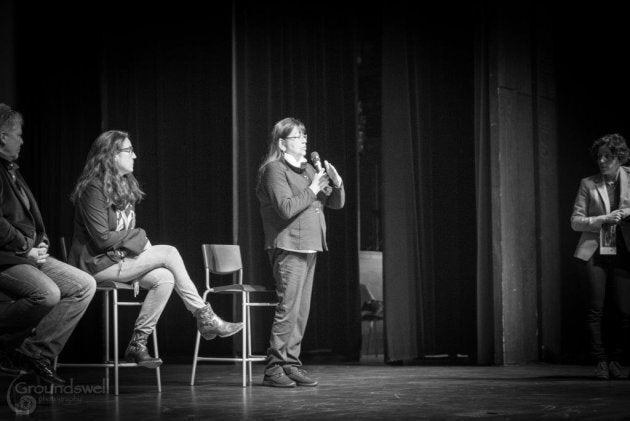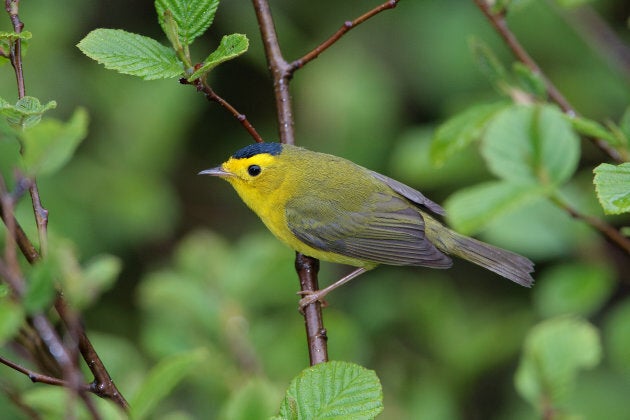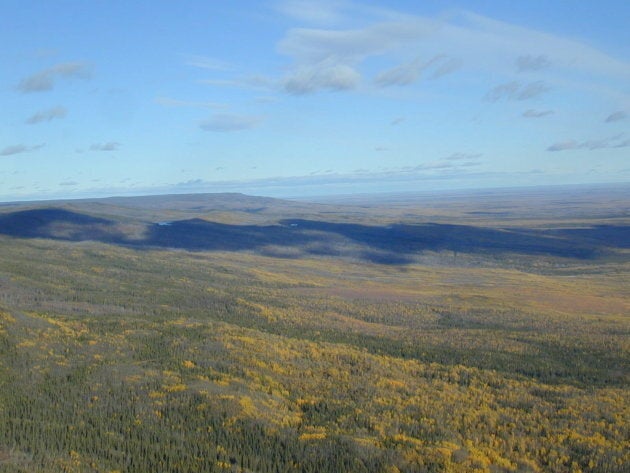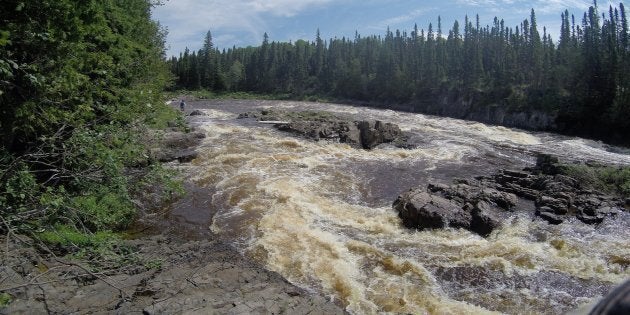The North French River in the Moose Cree homeland is an area of great cultural and environmental significance to the Moose Cree people and to Canadians. "You can still drink the water directly from the river," Chief Patricia Faries told a packed theatre in Toronto this past April. Yet, the situation is untenable.

There's been no change to the status of the North French River in northeastern Ontario for years. While Moose Cree First Nation has protected the North French under their laws, Ontario has not. The province continues to leave over 500,000 hectares of the watershed "open" and vulnerable to the harmful impacts of forestry and mining.
Something has to give.
The North French is alive. Its intact boreal forests and wetlands support brook trout, moose, lake sturgeon, migratory birds, black bear, wolves and boreal caribou, and its wetlands act as a giant carbon sink for the planet.

"It is clear that the preservation of the watershed is paramount," Chief Faries added.
Chief Faries also explained the sacred origin of her duty to protect the homeland on behalf of her people. She's spoke of this before in 2016, when she presented to the Environment and Sustainable Development Committee:
"We, the Moose Cree people, are the original peoples of this land. The Creator has given us this land as our home. The Creator gave us our spiritual beliefs, our languages, our culture, and this place on earth, which provides for all our needs. Our ancestors have lived on this land since time immemorial, drawing on the animals, fish, and plants for their sustenance. We are charged by the Creator with the duty of preserving and protecting the land for our future generations."
So what's been happening? Twelve leading environmental and Indigenous leaders offered support for the protection of the river through an Open Letter in 2017. The river was featured in a Toronto Star article. The Toronto Star Editorial Board and Environmental Commissioner of Ontario also came out in favour of protecting the North French River — see page 211 in the ECO's annual report.
We heard from Chief Faries last night that on line staking is threatening the North French River. Her community is alarmed by it. Makes the watershed vulnerable.#protectheNorthFrenchpic.twitter.com/8yMkJmewQc
— Anna Baggio (@annabwild) April 11, 2018
And two citizen-led petitions generated over 50,000 signatures in support.
This wasn't enough. Politicians haven't listened yet. Protecting lands and waters is hard work. While it may look to the public like it happens overnight, it doesn't. It takes years. It takes First Nations' leadership. It takes allies. The recent Dehcho First Nations announcement on the Edéhzhíe shows how it can work, where Indigenous Law protects the land and Crown Law reflects and respects it. Edéhzhíe is as a Dehcho Protected Area under Dehcho Law and a National Wildlife Area under the "Canada Wildlife Act." It took two decades of work.

As I recently told a class of fourth-year students at the University of Toronto, we have to be relentless in our line of work. This is how the North French will be protected.
It would be a win in the nature column and a gift to the planet at the same time.
And we have to have hope. There are lots of good reasons why the new Ontario government should want to act on the North French River. For more than a decade, there has been little work done to expand the protected areas system in Ontario which protects our rich natural heritage. The last significant expansion of protection was in 1999 through the Ontario Living Legacy Initiative.
Currently, only 10.7 per cent of the province is protected. Protecting the sensitive watershed would be an excellent down payment by the new Ontario government on meeting the international target of 17 per cent protection of lands and fresh waters by 2020. Beyond consultation, it wouldn't cost the province a cent, and it would be a win in the nature column and a gift to the planet at the same time. Questions were asked on the 17 per cent and North French River in the Ontario legislature just last week.

There is a deep hunger all across this province to protect lands and waters. Ontario and Canada are not immune to the biodiversity crisis. From the monarch butterfly, wood turtle and barn owl, to the lake sturgeon, wolverine and beluga whale — all need much more to be done to protect them.
More blogs from HuffPost Canada:
And, of course, we could do this in the spirit of Reconciliation. This elegant passage from the Truth Reconciliation Commission of Canada (TRC) provides perspective:
Reconciliation between Aboriginal and non-Aboriginal Canadians from an Aboriginal perspective also requires reconciliation with the natural world. If human beings resolve problems between themselves but continue to destroy the natural world, then reconciliation remains incomplete. This is a perspective that we as Commissioners have repeatedly heard: that reconciliation will never occur unless we are also reconciled with the earth.
Wildlands League hopes the new government will make expanding Ontario's protected areas system a priority, as 2020 is fast approaching. We also hope that First Nation Protected Areas like the North French will be front and centre. We can co-create a just and different future in Ontario.
Let's begin with the North French River.
Have you been affected personally by this or another issue? Share your story on HuffPost Canada blogs. We feature the best of Canadian opinion and perspectives. Find out how to contribute here.
Also on HuffPost: